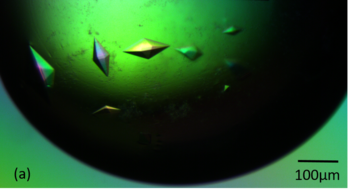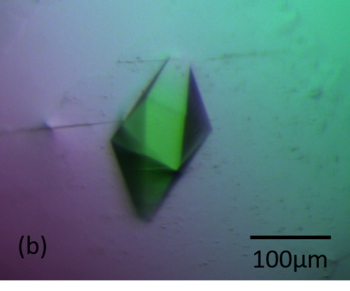Journal:IUCrJ:S2052252521005340
From Proteopedia
(Difference between revisions)

| Line 6: | Line 6: | ||
Although it is to an extent held in check in the industrialised world thanks to antiviral drugs, AIDS is still endemic in many parts of the world, claiming nearly 700,000 lives annually. It is thought that anti-HIV vaccination, when available, will be more efficient against the disease in the long term, especially where regular, well-organised healthcare is lacking. However, HIV mutates rapidly, and stimulating a response which protects against all variants remains challenging. An alternative is to target a host protein which is essential for the virus to enter cells and produce AIDS. | Although it is to an extent held in check in the industrialised world thanks to antiviral drugs, AIDS is still endemic in many parts of the world, claiming nearly 700,000 lives annually. It is thought that anti-HIV vaccination, when available, will be more efficient against the disease in the long term, especially where regular, well-organised healthcare is lacking. However, HIV mutates rapidly, and stimulating a response which protects against all variants remains challenging. An alternative is to target a host protein which is essential for the virus to enter cells and produce AIDS. | ||
| - | Anti-HIV antibody RoAb13 targets a short N-terminal region of the protein CCR5, which is the main entry receptor of HIV into the human organism. Blocking that receptor would therefore prevent HIV infection and replication. We had earlier reported the structure of the antibody alone by X-ray crystallography (Chain ''et al.'' 2015<ref name="Chain">PMID:26030924</ref>), but the structure of the antibody complexed to the part of CCR5 to which it binds (its epitope) had remained elusive. That structure is important for designing efficient vaccines based on short synthetic immunogenic peptides that mimic the CCR5 antibody-binding region. | + | <scene name='88/884898/Cv/24'>Anti-HIV antibody RoAb13</scene> targets a short N-terminal region of the protein CCR5, which is the main entry receptor of HIV into the human organism. Blocking that receptor would therefore prevent HIV infection and replication. We had earlier reported the structure of the antibody alone by X-ray crystallography (Chain ''et al.'' 2015<ref name="Chain">PMID:26030924</ref>), but the structure of the antibody complexed to the part of CCR5 to which it binds (its epitope) had remained elusive. That structure is important for designing efficient vaccines based on short synthetic immunogenic peptides that mimic the CCR5 antibody-binding region. |
After a long search for co-crystallisation conditions involving both the whole N-terminal region of CCR5 and the minimally required binding region to its antibody (the ‘core peptide’), and the analysis and comparison of X-ray crystallographic electron density maps obtained from several crystals, we have finally located the core peptide of the CCR5 receptor bound to RoAb13. It binds at the hypervariable region ‘CDR3’ of the antibody’s light chain, an expected antigen-binding site. In spite of the fact that the best attainable resolution is not particularly high at 3 Å, we have been able to identify the interacting residues between antibody and peptide: | After a long search for co-crystallisation conditions involving both the whole N-terminal region of CCR5 and the minimally required binding region to its antibody (the ‘core peptide’), and the analysis and comparison of X-ray crystallographic electron density maps obtained from several crystals, we have finally located the core peptide of the CCR5 receptor bound to RoAb13. It binds at the hypervariable region ‘CDR3’ of the antibody’s light chain, an expected antigen-binding site. In spite of the fact that the best attainable resolution is not particularly high at 3 Å, we have been able to identify the interacting residues between antibody and peptide: | ||
Revision as of 10:30, 14 June 2021
| |||||||||||
This page complements a publication in scientific journals and is one of the Proteopedia's Interactive 3D Complement pages. For aditional details please see I3DC.


